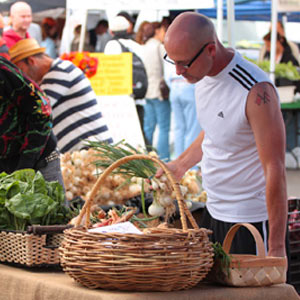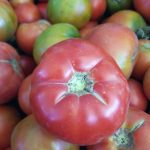The benefits of eating seasonally
Todays food shopper has choices our ancestors never dreamed of. Any time of the year, they can go to the grocery store and buy produce that was once available for only a few months or weeks of the year.
They can have strawberries in November, or corn on the cob in February. Given these options, why would one want to eat like our ancestors did: Eating produce in season, that is grown within a short drive from their homes?
Produce is at its peak nutritional value when it is ripe. But fruits and vegetables that will be traveling long distances to market aren’t picked when they are ripe, but before ripeness. While the produce might gain color and softness on its journey to the supermarket, nutritional value comes through the stem from the living plant. Once harvested, a vegetable is as nutritious as its going to get. And in a double whammy, nutritional value actually decreases every day past harvest.
Nutritional value is just not on the top of the agenda for large commercial vegetable farmers. In the days when all produce was local, horticulturists developing new strains of fruits and vegetables only had to consider several criteria: taste and nutritional value.
But today, with much of the growing and harvesting handled by machines and with produce shipped around the world, several other criteria take priority, and taste and nutrition take a back seat. Sturdiness and shippability are one factor, and uniformity of size is another. Another key factor big producers take into account is grocery case eye appeal.
While these new criteria are important to the grower’s profits, they add nothing to the health of the consumer. If anything, they detract from it. Sturdy produce that stands up to lengthy shipping will be shipped long distances, taking days on its journey to your table, and losing nutritional value with every day that passes between harvest and eating.
For your health’s sake, take a step back in time when you’re shopping for produce. Find your local vegetable stand, preferably one on the road right in front of the farm where the fruits and vegetables are grown, selling what was picked that day. Eat produce that was intended to be grown in the area where you live, and buy it at its peak of ripeness, rather than produce that was picked unripe and shipped thousands of miles.
Live in the city?
Finding a farm stand might take some doing, and getting there will require some driving. But what better excursion is there than a relaxing drive in the country to buy freshly picked vegetables?
Are you so urban that you don’t even own a car? Then look for your local health food store; most of them will have a fresh produce section, and their staff will be glad to tell you where the produce comes from and what days it’s delivered.
You might even want to add some healthy outdoor exercise into the mix and grow your own! But if you lack the yard space, time, or inclination, by all means, support your community fruit and vegetable growers by buying your produce ripe, locally grown, and freshly harvested.
Why eat seasonally?

Because eating seasonally is better for you and it tastes better too!







